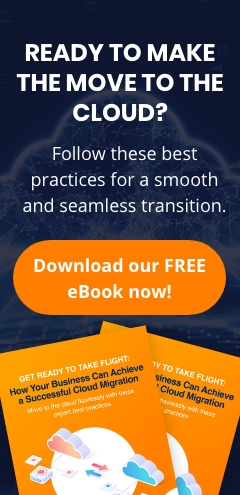Backing up your data is one of the most important things you can do to protect your business from cyberattacks, hardware failures, natural disasters, or other unforeseen data loss events. Fortunately, there are many data backup solutions on the market to meet your business’s unique needs.
Two of the most common types are cloud backups and on-premises backups. Each has its own benefits and drawbacks depending on the nature of your operations.
Let’s break down what these systems are and how they compare so you can decide what works best for your company.
What’s the difference between cloud and on-Premises data backups?
Cloud backups store your data on remote servers owned and managed by a third-party company. Your data is sent over the internet, encrypted for safety, and saved in secure data centers, usually in multiple locations. This is a highly secure model, but it does require internet access to utilize.
On-premises backups keep your data on equipment you own, like hard drives or local servers, stored at your physical office or business site. You have to manage and maintain these backups yourself or with the help of your outsourced IT services provider, but this model gives you full control and quick access without needing the internet.
Pros and Cons of Each Backup Type
Let’s examine the pros and cons of both models so you can make an informed decision.
Cost
Cloud backup: You usually pay a monthly or yearly fee based on how much data you store to your cloud provider. It’s affordable to start, as you don’t have to buy new hardware, but costs can increase as your data needs grow. Still, your costs will remain stable.
On-Premises backup: There’s a bigger cost upfront because you have to buy equipment, but over time, you may save money by avoiding monthly fees. Just make sure you aren’t spending too much time and money on maintenance.
Access and flexibility
Cloud backup: You can reach your data from anywhere with an internet connection. Even if your office is damaged or all your computers fail, your backups are still safe and can be restored to a secondary location.
On-premises backup: You need to be at your office to access your backups unless you’ve set up remote access, which can be complicated and costly. However, in the face of prolonged internet outages, you’ll still have a recovery method as long as you have power.
Security and compliance
Cloud backup: Reputable providers use strong security tools such as encryption and access controls. However, this does not free you from liability, as all providers work under the shared responsibility model.
On-premise backup: You’re fully in charge of security. This means you’re responsible for setting up protections and meeting any legal requirements yourself. But this level of control is highly secure and might be necessary to meet your compliance obligations.
Reliability and protection
Cloud backup: Your data is typically copied to several locations with this model, so even if one server fails, your data is still safe. This geo-redundancy makes cloud systems very reliable, especially in the face of localized disasters.
On-premises backup: If something happens to your office, such as a fire or flood, your backups might be lost too. That’s why on-site backups work best when combined with another off-site system.
Hybrid backup models
Many businesses choose a hybrid solution, which combines both cloud and on-premises backups. This approach gives you fast local access when things are running smoothly and secure remote backups in case of emergencies. It’s often the best way to make sure your data is always safe and available, but it is also the most expensive model because you’re essentially paying to maintain two separate infrastructures.
Still not sure which data backup model is right for you?
Contact outsourceIT for a FREE consultation, and our data backup specialists will examine your current setup and operations to make tailored recommendations for the best data backup options for your needs.
Partner with oursourceIT, and we’ll help you plan and implement your chosen data backup solution as well as manage and maintain it to ensure you’re never left without your mission-critical data.

